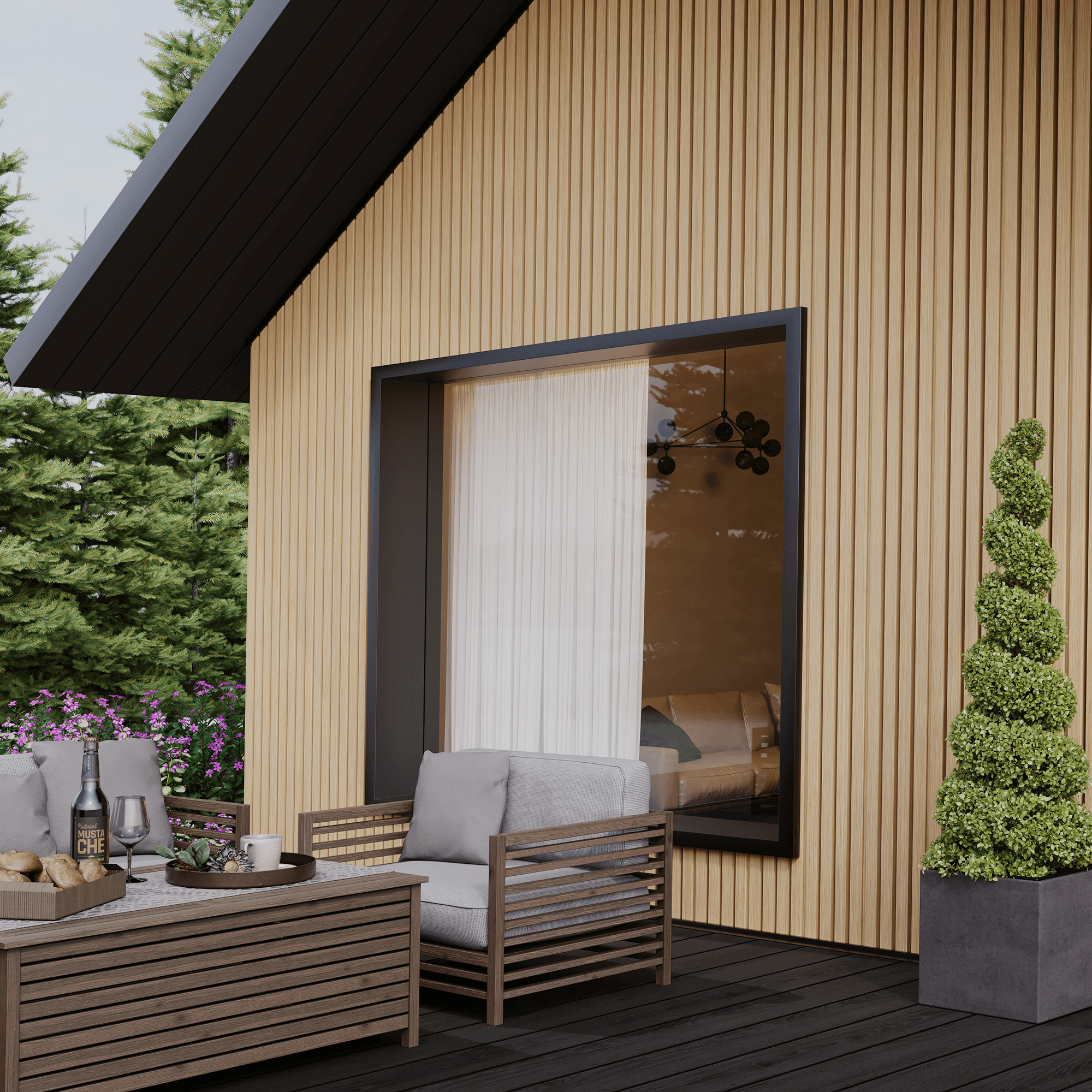
Do You Need Planning Permission for Cladding?
If you’re considering installing cladding on your home or in the garden, you’ve probably asked the question, ‘Do you need
Products in Stock
Lowest Prices
Express Delivery
10-Year Warranty
December Sale. Up To 15% Off.
Does composite decking expand and contract? The short answer is ‘yes’, but this is completely normal and shouldn’t present a problem as long as the decking is correctly spaced and installed.
If you’re considering starting a new decking project or replacing tired or worn existing decking with new composite boards, you might be interested in finding out how composite decking behaves in a range of different conditions. In particular, you might want to know whether composite decking expansion is common, whether this is harmful, and how to prevent it if it is. It’s also worth noting from the outset that wooden decking will also expand and contract just like composite decking and can actually be far more prone to changes due to moisture content compared to composite decking.
So, why does composite decking expand? Like almost all solid substances, the composite material used in our composite decking expands slightly as it gets warmer, especially if it’s a darker colour like anthracite or black graphite. This is a process known as thermal expansion and it is common to most building materials. Essentially, the boards will expand slightly when the temperature rises and contract again when it cools.
Wooden decking boards will also expand significantly due to moisture, whether this is from rainfall, standing water or humidity in the air. Composite boards do contain wood fibre which expands and contracts, but the composite nature of the material means that it is far less susceptible to moisture-related expansion. This means that temperature is the only factor that will cause significant expansion in composite boards.
Composite decking is likely to expand more often in hotter weather, but high-quality composite decking such as Dino Decking’s composite boards are flexible enough to cope with some expansion without causing any long-term damage.
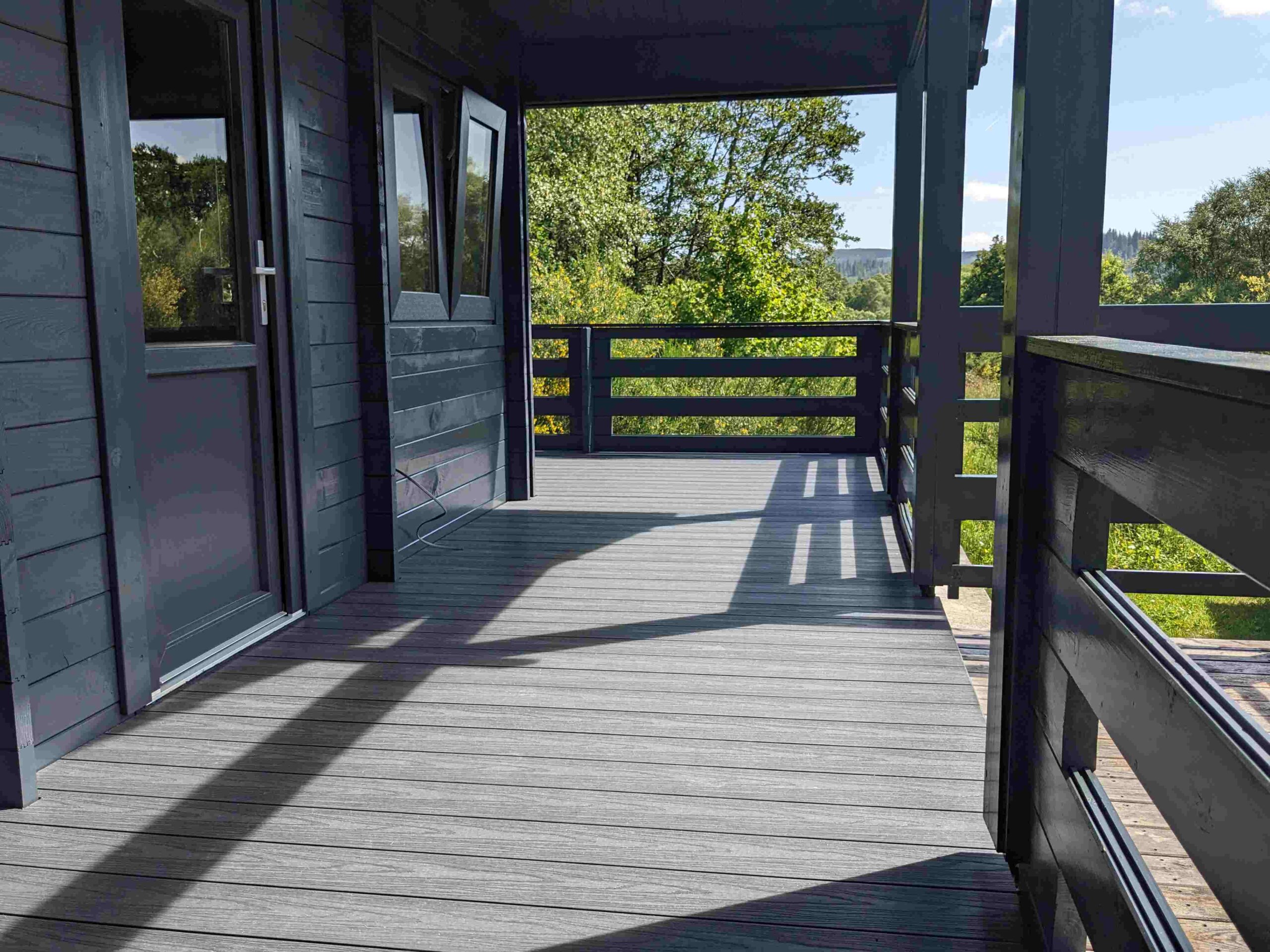
Thermal contraction is the opposite side of the coin to thermal expansion and means that most solid substances – including composite decking material – shrink and contract as they get cooler. In practical terms, this means that composite decking will tend to contract in low temperatures. This also affects timber boards, which may repeatedly expand and contract not only due to changes in temperature but also in moisture levels. Wooden boards can also be more prone to warping or splintering due to these issues than more robust composite decking boards.
As with expansion, high-quality composite decking boards can withstand natural contraction and are unlikely to have any major issues. It is, however, important to install composite boards correctly in order to minimise the risks and limit the effects of any potential issues that expansion and contraction could cause.
You cannot prevent composite decking from expanding and contracting entirely, as this is a normal physical process related to changes in temperature. You can certainly take steps to prevent this small amount of expansion from causing issues, however. The main way of doing so is to ensure that the decking is properly installed, which will allow for such changes.
Storing the boards properly before installation can also be important. If the boards have been exposed to heat or extreme cold prior to installation, they might have expanded or contracted already. It is therefore generally best to leave them in a relatively cool place that is shaded from the sun. If you’re undertaking a decking project in the summertime, it might also be advisable to start the installation in the morning when temperatures are generally lower.
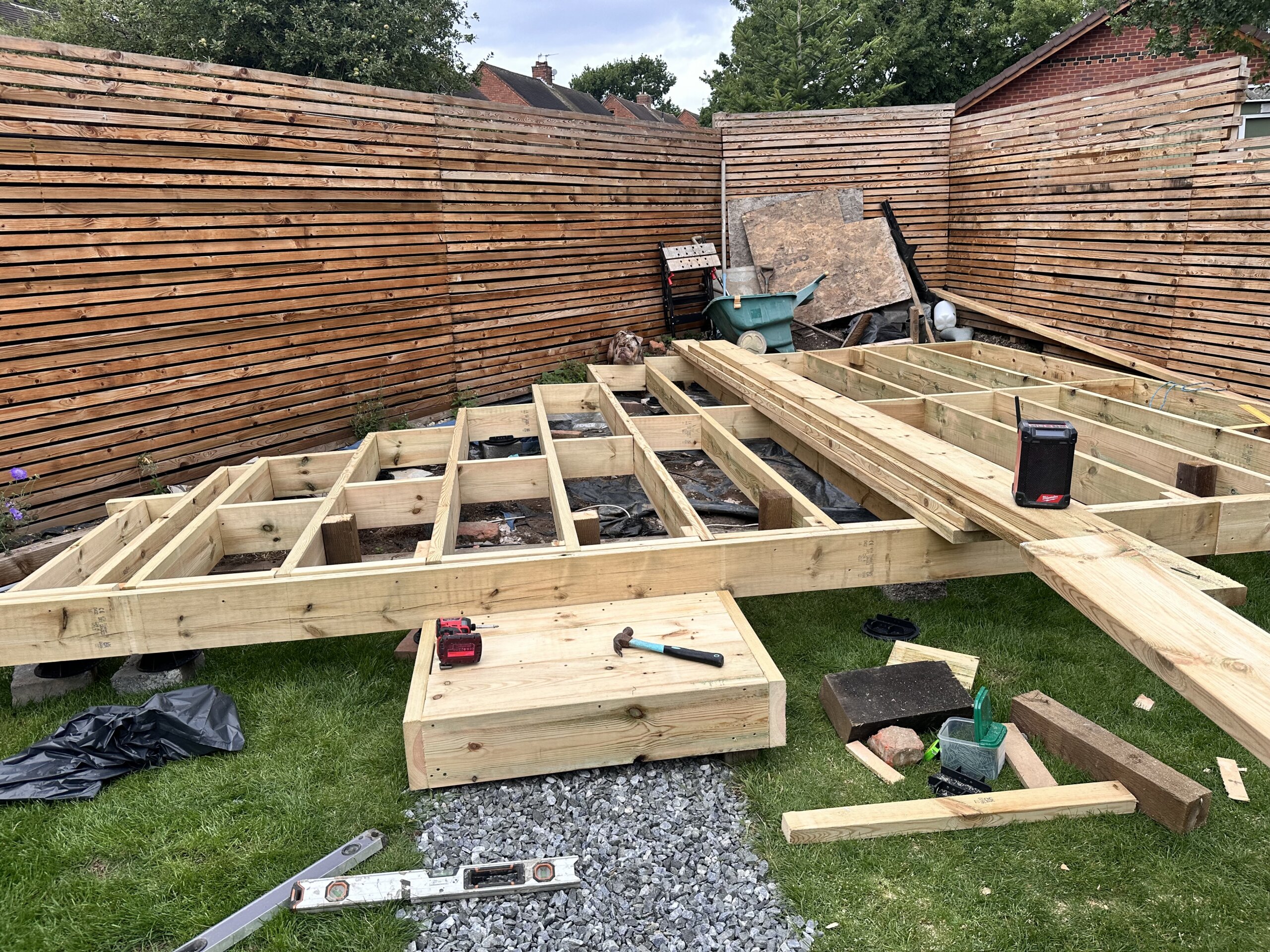
Proper deck frame spacing is essential. Decking boards should not be touching each other when they are installed. This may look more aesthetically pleasing, but it can cause issues if you do not leave space for them to expand.
Leave a small gap between the boards to allow for expansion; otherwise, the boards could expand and cause warping or even splitting as they are forced against each other. On the other hand, you shouldn’t leave gaps that are too big. When they contract in cold weather, this could lead to bigger gaps between the boards, which could pose a safety hazard. Composite decking spacers can help you to achieve the proper spaces between boards.
Some people like their decking to be a place to relax in the sun during summer, but in terms of expansion, having the decking exposed to strong rays of sun all day might not be the best option. The best-case scenario is to place the decking in a location that receives sun for a few hours of the day, but not all day long. This might not be possible in every garden though, especially if space is limited.
Certain colours are more prone to expansion. Darker colours absorb more heat, so may be more prone to expansion than lighter colours. Darker composite decking will also get hotter to the touch, which may be an issue in particularly warm weather and heatwaves.
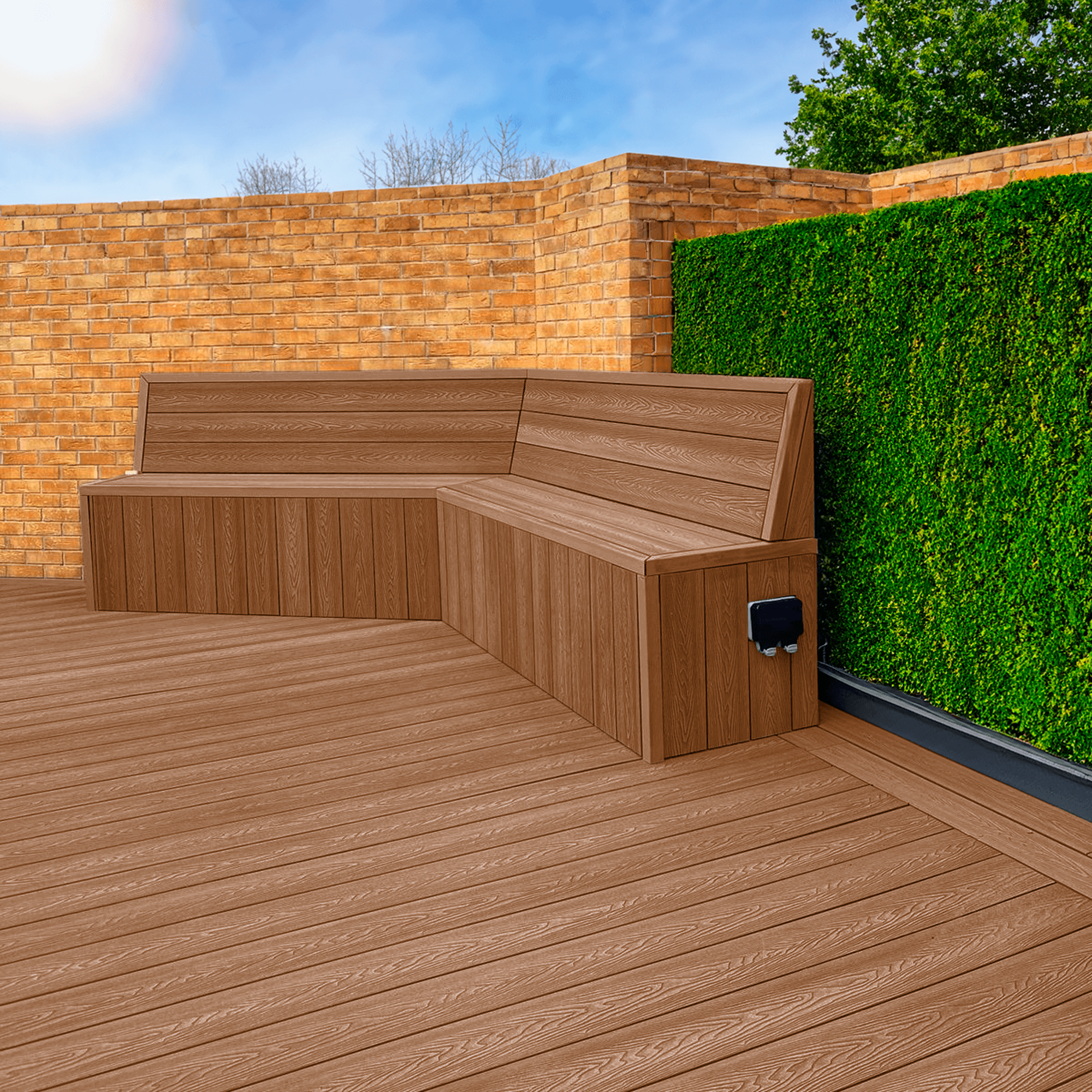
Expansion and contraction could cause long-term damage – including warping, splintering or cracking – if the boards haven’t been installed correctly. This could potentially invalidate the warranty and lead to extra costs as some of the boards may need to be replaced or taken up.. For more information on how to tell if your decking needs replacing, take a look at our helpful blog.
Safety is also a big concern as the gaps between the boards could widen when the boards contract. This is generally only a serious problem if the boards have been positioned too widely apart in the first place, but wider gaps could potentially cause a tripping hazard or be wide enough for a child to get fingers stuck. If the boards split or warp due to expansion and contraction, this could also be dangerous. Warped boards can cause a hazard underfoot and sharp splinters could be an injury risk.
Gaps that are too wide or boards that lose their shape or splinter and crack will obviously not look great in your outdoor space. With composite boards, you will only experience serious issues with extreme expansion and contraction, but damage can certainly occur if the boards are not properly installed from the beginning.
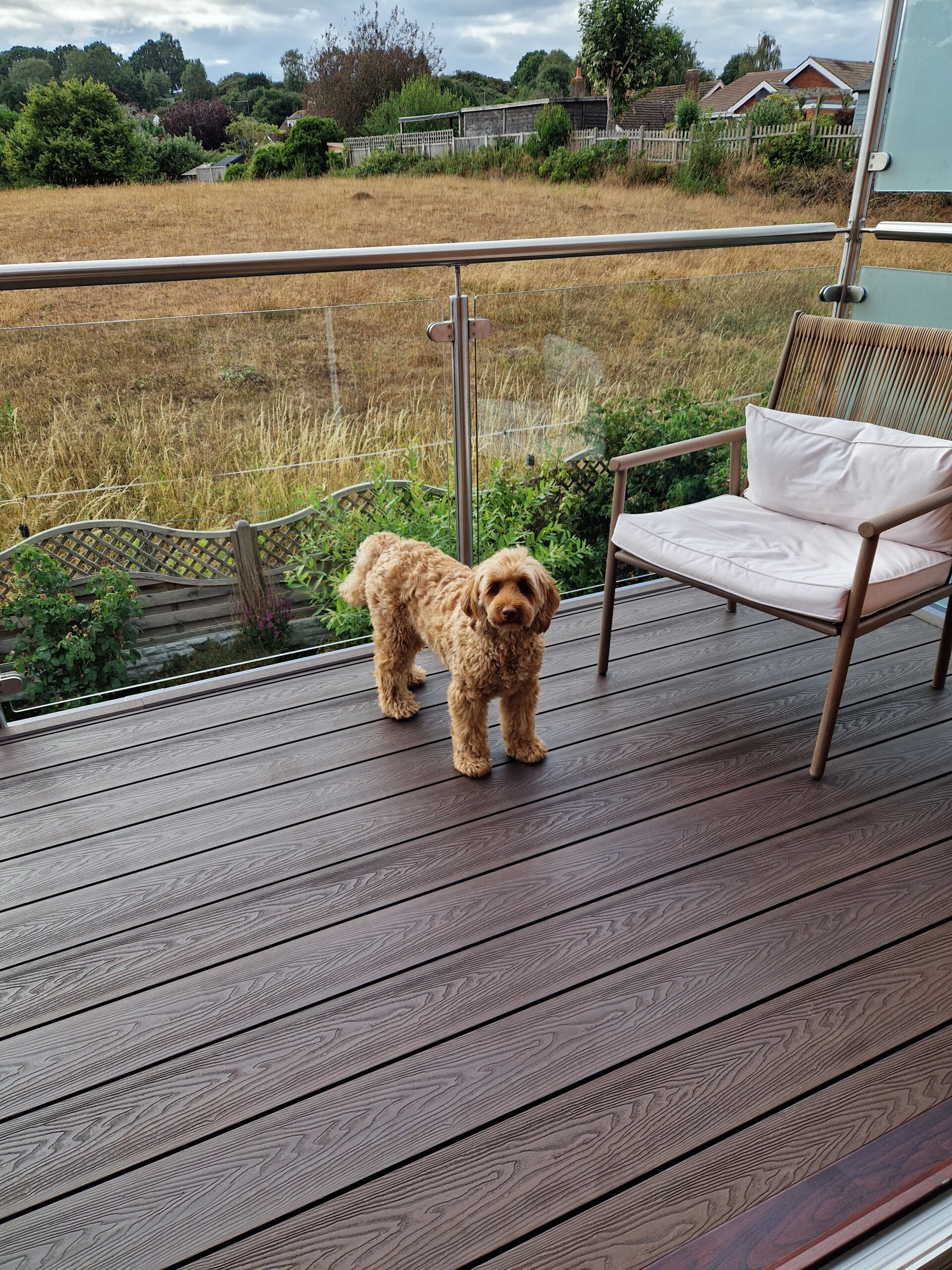
There’s no single precise answer to the question, ‘how much does composite decking expand?’ Expansion and contraction of composite decking boards can vary, but in general terms, composite boards will only expand and contract by a small percentage of their overall length and width. This is usually anywhere between 0.1% and 0.3%, so will generally be only a few millimetres at most.
Yes, composite decking does require expansion gaps. These are gaps that allow for the natural expansion and contraction that all decking boards can experience. Dino Decking offers hidden fasteners that can automatically create these expansion gaps for you. They will also help to ensure that your decking boards are perfectly aligned to run straight alongside each other.
General guidelines say that side-to-side gaps between boards should be 3mm to 6mm. You should also leave gaps at the ends of composite decking boards if they run into a solid barrier, such as composite fencing or composite cladding.
Composite decking is a synthetic material made from a blend of recycled wood and plastic. This makes it much more durable than comparable wooden decking boards, and composite decking can still last between 20 and 40 years, even with some slight expansion and contraction. Proper maintenance of composite decking is essential to keep it looking fresh though, and it must be properly installed in the first place.
Composite decking makes a great choice for any decking project, whether you’re building a whole new deck from scratch or looking to replace a tired, worn or damaged existing deck. Our composite materials are engineered to be highly durable and damage-resistant, but it is important to install composite decking correctly and allow for natural expansion and contraction.
Dino Decking’s composite decking comes in a variety of vibrant colours and ranges, including our Classic Composite Decking and Premium Composite Decking. Order a free sample pack today or contact us for further advice and information.
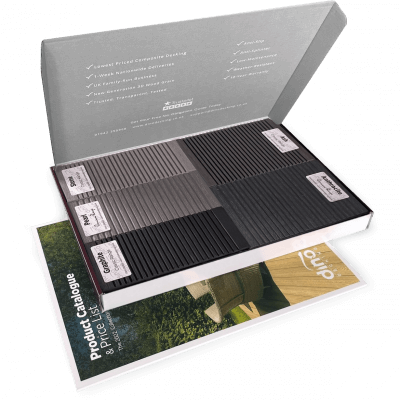
Our sample pack contains a sample piece of each colour currently available. Order your free sample pack today to compare the colours and get a true feeling of the Dino Decking range!

If you’re considering installing cladding on your home or in the garden, you’ve probably asked the question, ‘Do you need
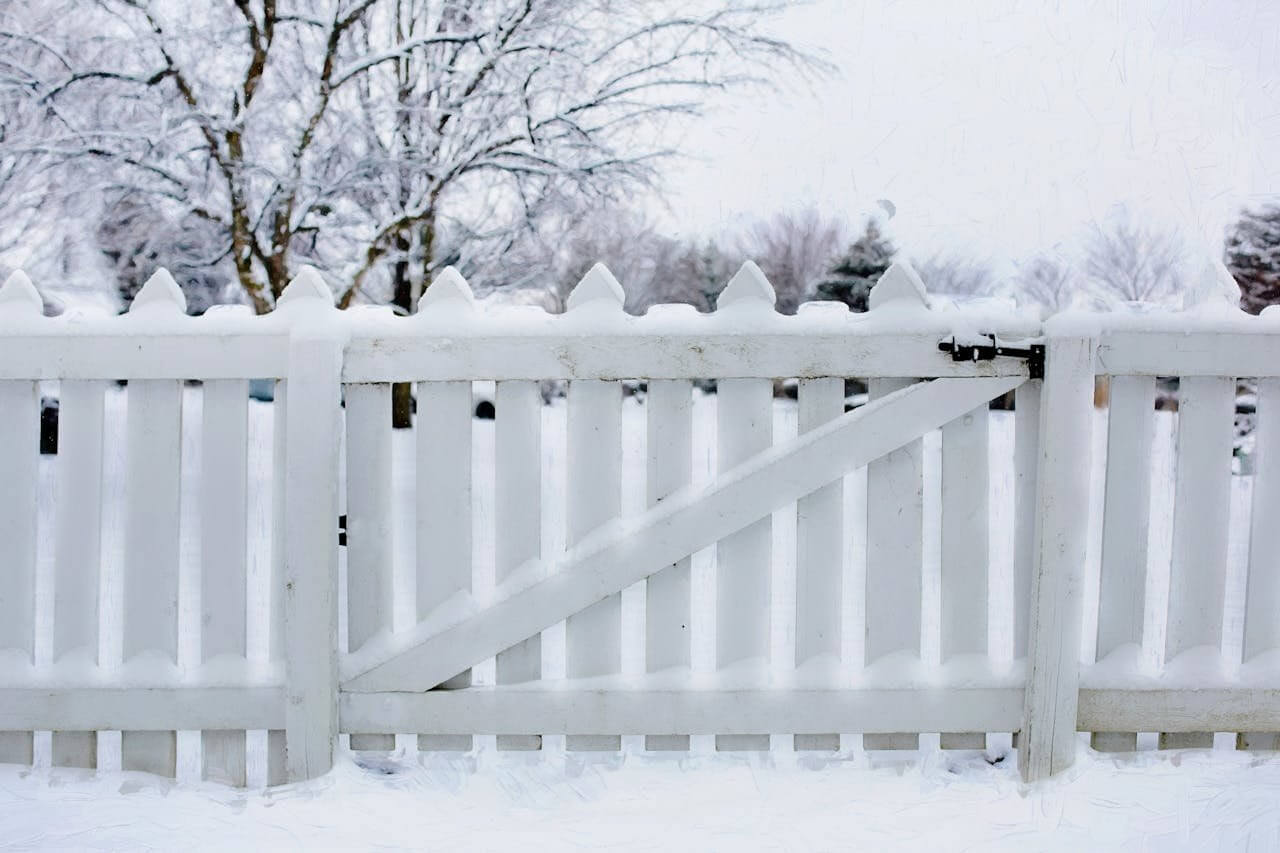
If you’re looking to go all out this festive season, you might be looking for some fantastic Christmas garden ideas